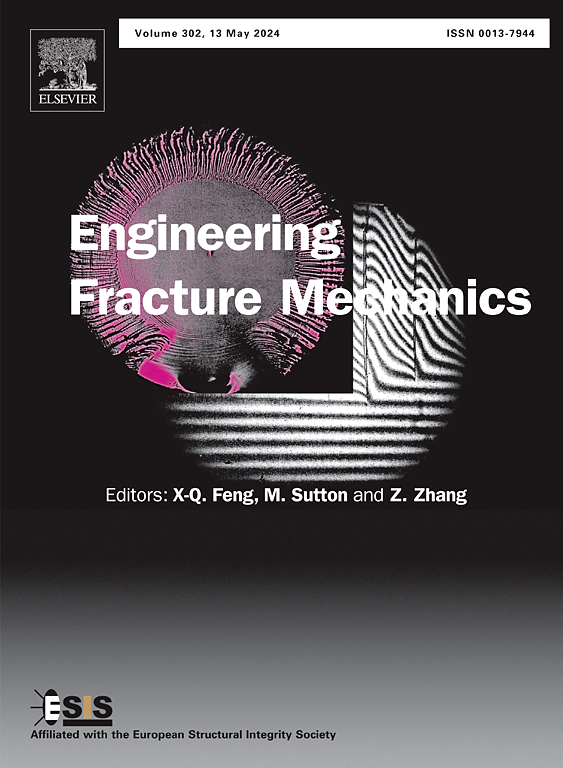依赖速率的 CNT 增强聚合物动态断裂裂缝桥接模型
IF 4.7
2区 工程技术
Q1 MECHANICS
引用次数: 0
摘要
碳纳米管(CNT)通过桥接裂纹生长路径提高了聚合物基复合材料的断裂韧性。本研究提出了一种有限元(FE)速率依赖性裂纹桥接模型,用于计算 CNT 增强聚合物中 Mode-I 动态裂纹生长的加载速率和快速裂纹生长。在断裂过程区(FPZ)考虑了两种不同的 CNT 桥接和基体开裂破坏机制,并考虑了断裂能量的耗散。基体相采用粘弹性-粘塑性材料模型,以捕捉应变速率效应。基体相中的裂缝使用以实验数据为特征的内聚区元素建模。在相关的裂缝张开速度下,通过 CNT 拔出模拟获得的随速率变化的牵引分离定律用于模拟 FPZ 中的 CNT 桥接。将给定的牵引力分离定律视为一个构成方程,用非线性弹簧元件代替 CNT,以方便对 FPZ 中众多 CNT 的裂纹桥接进行有限元模拟。所提出的依赖速率的裂纹桥接 FE 模型可以研究 CNT 的长度、取向、波形、体积分数和聚集等关键因素在不同裂纹速度下对断裂能量耗散的影响。所开发的模型可同时考虑所有 CNT 参数的交互影响,有助于在分析 CNT 对纳米复合材料动态断裂韧性的影响时考虑所有加工引起的不确定性。本文章由计算机程序翻译,如有差异,请以英文原文为准。
A rate-dependent crack bridging model for dynamic fracture of CNT-reinforced polymers
Carbon nanotubes (CNTs) improve the fracture toughness of polymer-based matrix composites by bridging the crack growth path. This research presents a finite element (FE) rate-dependent crack bridging model of Mode-I dynamic crack growth in CNT-reinforced polymers accounting for rate of loading and rapid crack growth. Two distinct CNT bridging and matrix cracking damage mechanisms are taken into account in the fracture process zone (FPZ) accounting for the dissipation of fracture energy. A viscoelastic-viscoplastic material model is adapted for the matrix phase to capture the strain rate effects. The crack in the matrix phase is modeled using cohesive zone elements characterized by experimental data. A rate-dependent traction-separation law obtained from CNT pull-out simulation at relevant crack opening speeds is used to simulate the CNT bridging in the FPZ. Considering the given traction-separation law as a constitutive equation, the CNTs are replaced with non-linear spring elements to facilitate the FE simulation of crack bridging with numerous CNTs in the FPZ. The proposed rate-dependent FE model for crack bridging enables the study of the effect of key CNT factors such as length, orientation, waviness, volume fraction, and agglomeration on fracture energy dissipation at various crack speeds. The developed model can simultaneously consider the interactive effects of all CNT parameters which is useful for considering all processing-induced uncertainties in analyzing the effects of CNTs on the dynamic fracture toughness of nanocomposites.
求助全文
通过发布文献求助,成功后即可免费获取论文全文。
去求助
来源期刊
CiteScore
8.70
自引率
13.00%
发文量
606
审稿时长
74 days
期刊介绍:
EFM covers a broad range of topics in fracture mechanics to be of interest and use to both researchers and practitioners. Contributions are welcome which address the fracture behavior of conventional engineering material systems as well as newly emerging material systems. Contributions on developments in the areas of mechanics and materials science strongly related to fracture mechanics are also welcome. Papers on fatigue are welcome if they treat the fatigue process using the methods of fracture mechanics.

 求助内容:
求助内容: 应助结果提醒方式:
应助结果提醒方式:


